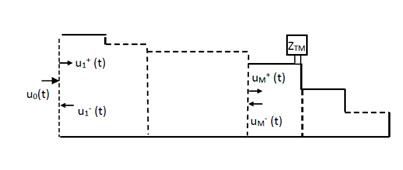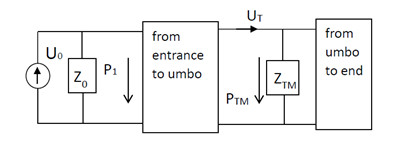The acoustic transfer functions of external ears with or without headphones affect the features of perceived sounds and vary considerably with listeners and headphones. The acoustic transfer function of an external ear means the transfer function from the sound at the entrance of the ear canal (or from the electrical input of a headphone or hearing aid coupled to the ear) to the sound at the eardrum.
In many applications such as hearing aid design, headphone sound reproduction, audiometric and psychoacoustic measurements, it is desired to estimate the effects of the external-ear transfer functions on sounds transmitted to eardrums. Direct measurements of the transfer functions for various human ears and headphones are inconvenient and difficult.
Traditionally, standard ear simulators are used to measure the external-ear transfer functions. Unfortunately, however, current standard ear simulators have fixed physical structures and are limited to simulating average ears below 10 kHz, which are unable to take into account the effects caused by individual difference in ear canal and eardrum impedance. Besides, it is also insufficient for applications aiming at transmitting desired sounds to eardrums of different listeners over a wider frequency range.
Without physically constructing ear simulators for various ears, researchers from the Institute of Acoustics (IOA), the Chinese Academy of Sciences recently developed a novel signal processing method for estimating the external-ear transfer functions for various ears with or without headphones based on the acoustic signal model of external ears.
Below 15 kHz, an ear canal is modeled using a multi-sectional acoustic tube (Fig.1). As well, an eardrum is modeled using its effective acoustic impedance ZTM concentrated at the umbo point, and a sound source to the ear canal is represented in terms of its Norton equivalent volume-velocity source U0. Also, its acoustic source impedance Z0 is observed from the entrance of the ear canal (Fig. 2).
According to the acoustic model, the sound signal model of external ears is derived, with the sound transmission within the ear canal being described using a chain of delays, attenuations and reflection coefficients. It is determined by the cross-sectional shape and size of the ear canal and the eardrum impedance (Fig. 3).
From the signal model, the transfer functions of external ears with or without headphones are formulated in terms of the reflection coefficients at the sectional boundaries of the ear canal model, the reflection coefficient from the entrance of the ear canal (or from the headphone or hearing aid), the reflection coefficient from the eardrum reference plane, and the equivalent sound source.
According to the formula, the external-ear transfer functions for various ears can be estimated via calculation given realistic data about external ears and headphones or hearing aids if applicable.
The calculated external-ear transfer functions for the Sennheiser IE60 and HD 598 headphones agree well with the results measured on standard ear simulators over the specified frequency range of the ear simulator.
A new method for measuring the Norton equivalent volume-velocity source produced by a headphone to the ear canal is also developed based on the signal model of the acoustic impedance tube.

Fig. 1 The acoustic model of ear canals (Image by IOA).

Fig. 2. The acoustic signal model of external ears (Image by IOA).

Fig. 3. The signal flow diagram of the volume velocities within the ear canal (Image by IOA).
Reference:
DENG Huiqun and YANG Jun. Modeling and Estimating Acoustic Transfer Functions of External Ears with or without Headphones. The Journal of the Acoustical Society of America. 138, 694 (2015).
Contact:
DENG Huiqun
Email: huid@ieee.org